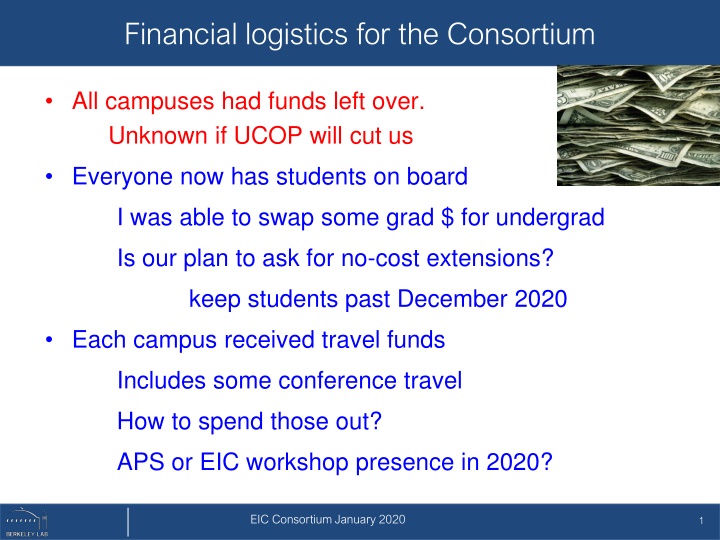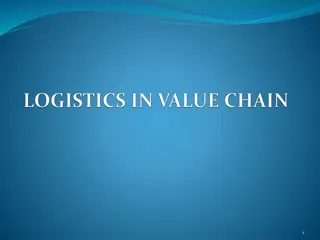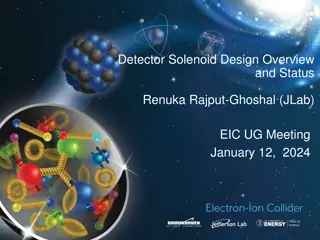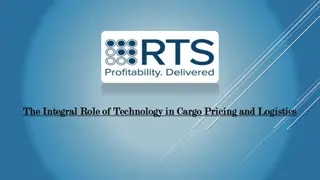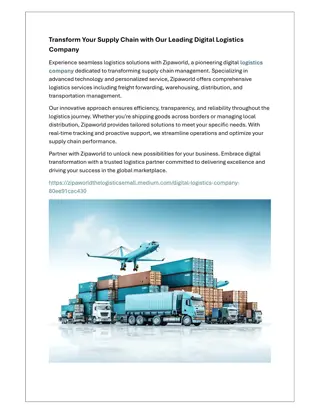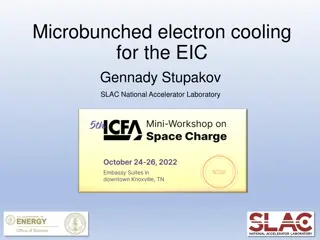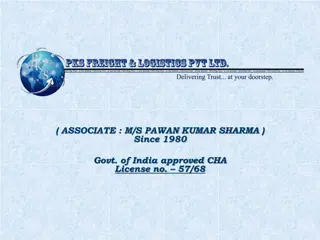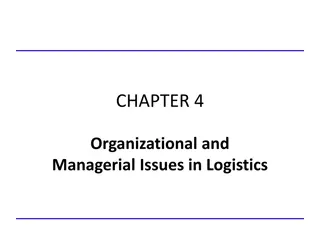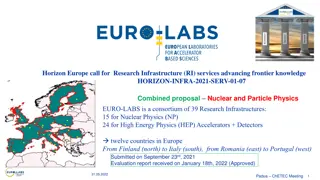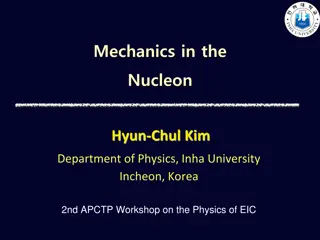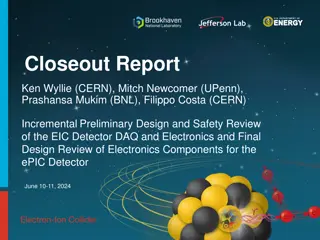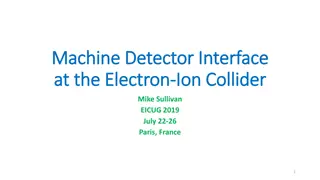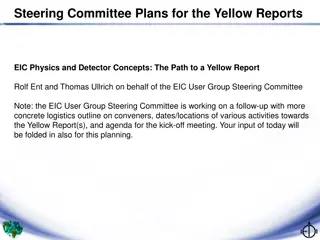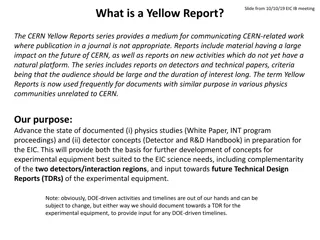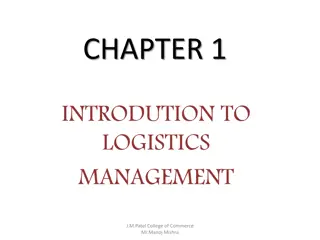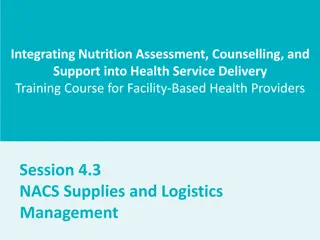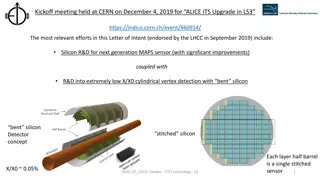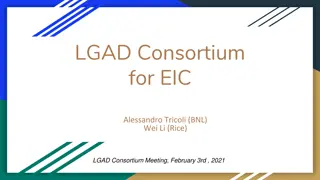Financial Logistics and Research Goals for EIC Consortium
The Consortium campuses have excess funds and are uncertain about potential budget cuts. Strategies are being discussed on utilizing the remaining funds effectively, including extending student presence and organizing workshops. The personnel roster includes recent additions, collaborations, and recruitment plans. Research goals at UCB focus on simulating jet production and reconstruction to achieve precision measurements. The approach involves studying jet probes in dense matter and optimizing tracker design in collaboration with LBNL. Recent progress includes simulations and investigation of tracking performance and software tools.
Download Presentation

Please find below an Image/Link to download the presentation.
The content on the website is provided AS IS for your information and personal use only. It may not be sold, licensed, or shared on other websites without obtaining consent from the author.If you encounter any issues during the download, it is possible that the publisher has removed the file from their server.
You are allowed to download the files provided on this website for personal or commercial use, subject to the condition that they are used lawfully. All files are the property of their respective owners.
The content on the website is provided AS IS for your information and personal use only. It may not be sold, licensed, or shared on other websites without obtaining consent from the author.
E N D
Presentation Transcript
Financial logistics for the Consortium All campuses had funds left over. Unknown if UCOP will cut us Everyone now has students on board I was able to swap some grad $ for undergrad Is our plan to ask for no-cost extensions? keep students past December 2020 Each campus received travel funds Includes some conference travel How to spend those out? APS or EIC workshop presence in 2020? EIC Consortium January 2020 1 1
UC Berkeley EIC Consortium January 2020 2 2
Personnel Miguel Arratia -> UCR Jose Soria -> PhD program at UCB (DUNE) Dhruv Dixit joined for spring semester Undergrads Youqi Song, Danny Geisz Barbara Jacak Looking to recruit new grad student Rey Cruz Torres will join as LBNL postdoc in April Close collaboration with Ernst Sichtermann, Yue Shi Lai, Winston DeGraw from LBNL EIC Consortium January 2020 3 3
UCB Goals for MRPI Simulate jet production and reconstruction Aim to specify tracking requirements Jet reconstruction also implies requirements on calorimetry performance and design Required statistics (will affect run time and triggering requirements) What it takes to make 1% precision measurements? Use physics-driven performance specs and connect with detector technology R&D Collaborate with LBNL on tracker design EIC Consortium January 2020 4 4
Approach Focus on jet probes of cold, dense matter Begin with kinematics studies Identify struck quark in DIS as our probe Characterize jets from the struck quark Simulate: Jet yields & spectra in e+p Energy balance, opening angle to get q-hat Jet fragmentation functions & modification Jet substructure & modifications in cold QCD matter Begin with particle level from PYTHIA Next add effects of detector response Add e+A with LBNL: optimize tracker EIC Consortium January 2020 5 5
Recent Progress Pythia level DIS jet production simulations https://arxiv.org/pdf/1912.05931.pdf Will hear from Youqi Song Began full GEANT simulations of detector response Investigate hadron tracking performance of all-Si tracker design from Ernst & Yue Shi Will hear single particle simulations from Winston DeGraw Investigate software tools available Framework options Learning about ACTS (new generalized tracking software from ATLAS) Began involvement in EIC detector workshops EIC Consortium January 2020 6 6
Next steps Simulate effects of tracking detector response Effects of tracking efficiency & resolution on jet reconstruction & jet energy scale Investigate all-Si vs. hybrid (Si + TPC) tracker Optimize tracker barrel/endcap arrangement based on where the jets go Apply ACTS track reconstruction package to EIC events (instead of RAVE/GENFIT) Contribute to EIC simulation software suite Work with Feng Yuan,et al on new jet substructure variables Look at calorimetry requirements for jet trigger & reconstruction + measure scattered electron energy EIC Consortium January 2020 7 7
Big picture questions How well can we measure substructure variables? And which ones to aim for? What detector hardware R&D is needed? Specify what to develop for silicon pixels (w/ALICE ...) Readout speed, power dissipation obviously What do we gain with thinner silicon? How/if to utilize timing information? Address these in collaboration with LBNL. Figure out how best to use the technical infrastructure of the 3 labs for tracker development (detector hardware development & computing) EIC Consortium January 2020 8 8
Some New Resources Will support collaborating postdocs & visitor at LBNL (3 years) EIC Consortium January 2020 9 9
